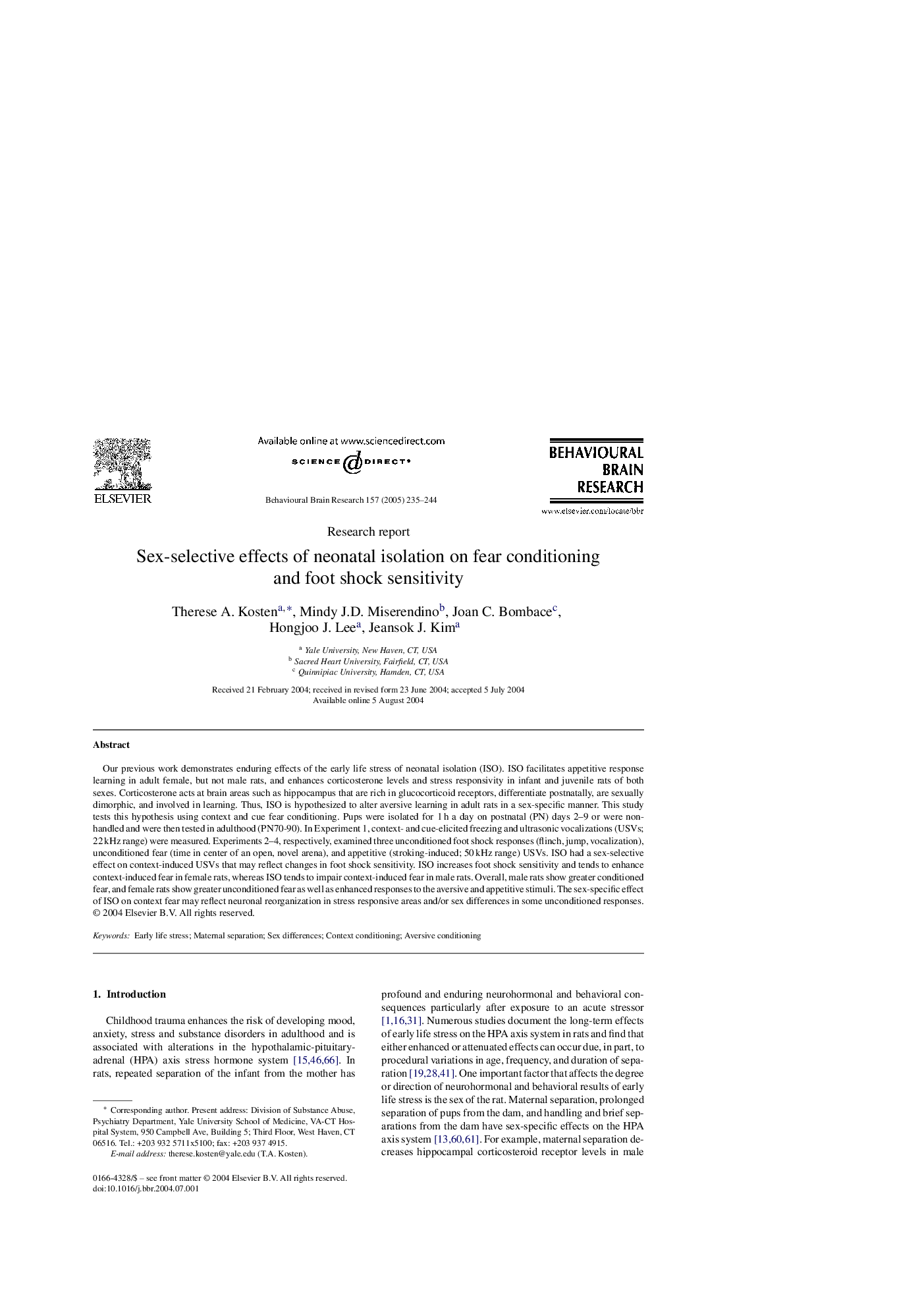| کد مقاله | کد نشریه | سال انتشار | مقاله انگلیسی | نسخه تمام متن |
|---|---|---|---|---|
| 9406845 | 1290141 | 2005 | 10 صفحه PDF | دانلود رایگان |
عنوان انگلیسی مقاله ISI
Sex-selective effects of neonatal isolation on fear conditioning and foot shock sensitivity
دانلود مقاله + سفارش ترجمه
دانلود مقاله ISI انگلیسی
رایگان برای ایرانیان
کلمات کلیدی
موضوعات مرتبط
علوم زیستی و بیوفناوری
علم عصب شناسی
علوم اعصاب رفتاری
پیش نمایش صفحه اول مقاله

چکیده انگلیسی
Our previous work demonstrates enduring effects of the early life stress of neonatal isolation (ISO). ISO facilitates appetitive response learning in adult female, but not male rats, and enhances corticosterone levels and stress responsivity in infant and juvenile rats of both sexes. Corticosterone acts at brain areas such as hippocampus that are rich in glucocorticoid receptors, differentiate postnatally, are sexually dimorphic, and involved in learning. Thus, ISO is hypothesized to alter aversive learning in adult rats in a sex-specific manner. This study tests this hypothesis using context and cue fear conditioning. Pups were isolated for 1Â h a day on postnatal (PN) days 2-9 or were non-handled and were then tested in adulthood (PN70-90). In Experiment 1, context- and cue-elicited freezing and ultrasonic vocalizations (USVs; 22Â kHz range) were measured. Experiments 2-4, respectively, examined three unconditioned foot shock responses (flinch, jump, vocalization), unconditioned fear (time in center of an open, novel arena), and appetitive (stroking-induced; 50Â kHz range) USVs. ISO had a sex-selective effect on context-induced USVs that may reflect changes in foot shock sensitivity. ISO increases foot shock sensitivity and tends to enhance context-induced fear in female rats, whereas ISO tends to impair context-induced fear in male rats. Overall, male rats show greater conditioned fear, and female rats show greater unconditioned fear as well as enhanced responses to the aversive and appetitive stimuli. The sex-specific effect of ISO on context fear may reflect neuronal reorganization in stress responsive areas and/or sex differences in some unconditioned responses.
ناشر
Database: Elsevier - ScienceDirect (ساینس دایرکت)
Journal: Behavioural Brain Research - Volume 157, Issue 2, 28 February 2005, Pages 235-244
Journal: Behavioural Brain Research - Volume 157, Issue 2, 28 February 2005, Pages 235-244
نویسندگان
Therese A. Kosten, Mindy J.D. Miserendino, Joan C. Bombace, Hongjoo J. Lee, Jeansok J. Kim,